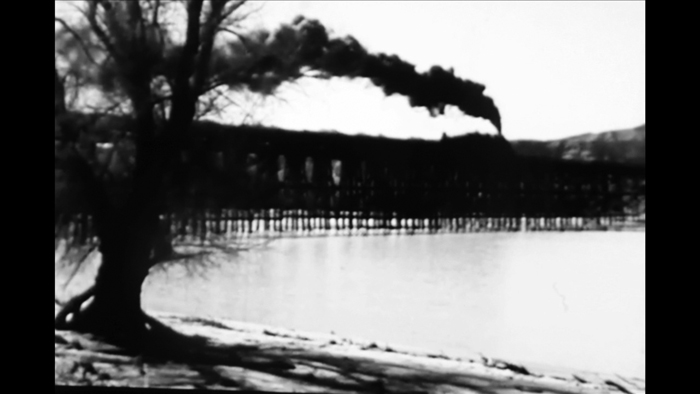NOTWITHSTANDING THE RECENT HURRICANE THAT FLOODED New York City’s galleries, the mundane act of pouring four liters of sea water from the nearest shoreline and leaving it to evaporate on the gallery floor creates a profoundly moving effect. Emilie Halpern’s installation, Drown (2012), in a ritual of self-effacement, utilizes the amount of water sufficient for a person to drown. The trace of sea water which remains, before it is replenished each day, is portentous and suggests the fragility of life.
“Facing the Sublime in Water, CA” is divided between works, like Halpern’s, that employ water as a reflection of sublimity, or expose the futility of human actions, and works that address the socio-political considerations of water and scarcity. Pieces in the latter category tend to look back historically, calling to mind the dynamics of planetary geology. At this scale, humanity is merely a drop in the bucket.
Harry Dodge and Stanya Kahn’s single channel video All Together Now (2008) suggests the possibility of a future collapse, or perhaps a vision of life into the first few decades of such a sea change. The rambling and nebulous narrative offers a dystopian view. The handheld, whipsaw camera work is likely to induce a measure of discomfort, if not nausea, and provokes anxiety—or more likely, primordial fear—as access to clean water becomes a defining challenge for humanity in the 21st century.
The show addresses, elliptically, global issues surrounding water rights. Enid Baxter Blader’s HD stop-frame animation from her 16mm film The West (2012) examines the history of the Los Angeles Aqueduct, William Mulholland, the Owens Valley, the damming of rivers in the western United States, and the Reclamation Act of 1902. The historical realities observed in the West—he appropriation of water and the persistence of humans in outstripping natural resources—acutely illustrate human folly.
In a slightly different vein, Luis Hernandez poses the transportation of water across borders as an indicator of cultural preconceptions. Untitled #12 (fountain) (2010), a water fountain made with ordinary materials, allows visitors to slake their thirst with water imported from Mexico.
The most absurd and eloquent expression of the sublime can be found in Ger Van Elk’s The Flattening of the Brook’s Surface (1972- 2001), a video in which the artist, paddling along a channel of water in a rubber dingy with a trowel, attempts to smooth the surface of the water that he has stirred up in his passage.
The expansiveness of “Water, CA” incorporates a wide range of ideas, while wrestling with contradictory impulses, in some cases, sacrificing continuity for breadth. In a somewhat obvious curatorial gesture, Roi Clarkson Coleman’s early 20th-century romantic painting of the California coast,Seascape, hangs in close proximity to Dodge and Kahn’s video, Van Elk’s The Flattening of the Brook’s Surface, and Hernandez’ Untitled #12 (fountain), signaling that we have left far behind any idealized notion of California.



















0 Comments